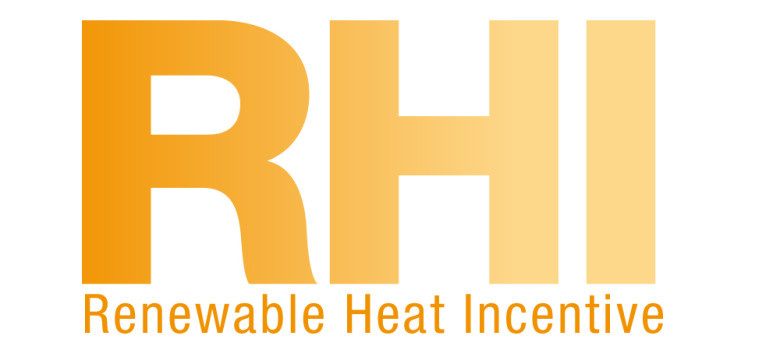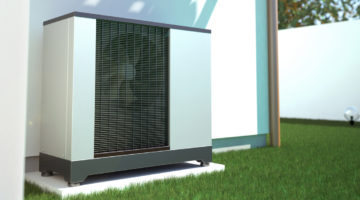
[Update: Significant changes have recently been made to the RHI. Read more about it here.]
What is the RHI?
The Renewable Heat Incentive is a funding mechanism created by the government to encourage the installation of renewable energy technologies. The non-domestic phase of the scheme has now been running for some time, providing businesses, large and small with income for generating their own energy through renewables.
How could it help your business?
Energy costs are spiralling and plenty of businesses are feeling the strain as they struggle to pay their bills. The RHI offers a means to move away from expensive natural gas and electricity to heat your business, and makes renewables much more attractive financially. Also remember, the payments are locked in for 20 years, as long as you continue to meet the criteria – so as fuel prices continue to rise in the coming years, you will continue to get a guaranteed income from your installation, as well as get the benefits of cheaper heat created by your installation.
What technologies are covered by the Scheme?
The following technologies are eligible for the scheme:
- Biomass – The majority of RHI payments so far have been to biomass installations. This is because, in areas without mains gas, biomass offers a very competitive payback. The cost of fuel for example, tends to be much cheaper than fuel oil or electricity. There are also some finance schemes available for biomass installations. For example, the Carbon Trust operates an interest free loan scheme to businesses repayable over 5 years. Typical cost per unit of fuel is around 4p/kWh so it has a similar cost to gas, but is much cheaper than other fuels.
- Biomethane – The advantage for biomethane plants is that no further accreditation is required for the RHI and all you have to do is register to get your payments, rather than going through an application process.
- CHP – This will be eligible for the RHI for the heating element as long as the fuel used is covered by the scheme – e.g. biomass, biogas or geothermal. The plant would not need to meet CHPQA standards to get the RHI, but the standard for the fuel in question will have to be met.
- Ground source heat pumps – If you have the space needed for these heat pumps, then they can look very attractive. Generally speaking, no planning permission is required, which is a major advantage over air source heat pumps or biomass. It must be stressed that you will need considerable space and the right ground conditions to make it work, so this isn’t for everyone. The cost per unit of heat of course does depend on the cost of electricity. As a typical heat pump is between 300-400% efficient, the cost of producing a unit of heat based on current electricity prices would be around 4p/kWh – similar to the cost of gas.
- Water Source Heat Pumps – These are a great bit of technology, but are very specific to location, and therefore you will need a body of water on your property to be able to install a water source pump. They are included in the RHI and get the same level of funding as ground source heat pumps.
- Air Source Heat Pumps – At the current time, Air Source Heat Pumps are not part of the RHI. The Government have said that Air Source will be included from April 2014.
- Deep Geothermal – These tend to be large installations with no MCS accreditation scheme attached to them; therefore Ofgem will look at them on a case by case basis. They will receive the same funding as ground source heat pumps.
- Solar Thermal – If the solar thermal system is being used for space, process or water heating, it will be eligible for the RHI. Unlike other installations, only systems under 200kW are eligible, but this is unlikely to apply to the majority of installations. The
- Solar PV for Heating – If you have a Solar PV system, it may be eligible for RHI on just the energy used for heating.
- District Heating – District heating is eligible for the RHI in the same way as any other installation. So a 600kW biomass facility servicing a factory would get the same funding as a 600kW biomass district heating facility. Obviously a district heating facility is going to have higher running costs in this example, but there is currently no additional funding under the RHI to make this up.
What are the eligibility criteria?
General eligibility checklist
1) The applicant is the owner of the eligible installation (see Chapter Four), the owner’s identity has been verified by us and their bank details have been validated. Where there are multiple owners, the applicant must have permission to act for the others
2) The plant is an eligible renewable heat technology type and size (please see Table 2 below)
3) The installation was completed and the plant was first commissioned on or after 15 July 2009 (see Chapter Four) (or is a CHP installation which was generating electricity only prior to 15 July 2009, using biomass or biogas and converted to become an eligible CHP system on or after 15 July 2009)
4) No grants from public funding have been or will be received for purchasing or installing the eligible installation (see Chapter Four) (or for installations commissioned between 15th July 2009 and the start date for the RHI those grants have been repaid)
5) The plant was new at the time of installation (see Chapter Four)
6) For applicable technologies: The plant has MCS or equivalent certification, and the commissioning certificate was issued by an installer who was certified under the MCS (see Chapter Four)
7) The plant uses either liquid or steam as the heat delivery medium (see Chapter Four)
8) The plant is providing heat for at least one eligible heat use: heating a space, heating water or carrying out a process, where the heat is used within a building or, where the heat is used otherwise than in a building. For cleaning or drying on a commercial basis (see Chapter Six)
9) The installation is not solely heating a single domestic premises (see Chapter Four)
10) The metering arrangements are correct – right types of meters, calibrated, and placed in correct locations according to whether the installation is classed as using a ‘standard’ or ‘multiple’ metering arrangement (see Chapter Seven) if applying for accreditation on or after the 24th September 2013. If you were accredited before this date your installation would have been classed as “simple” or “complex” (see RHI Guidance Document “Ongoing Metering Eligibility Requirements for Participants Accredited before 24th September 2013” for further details).
11) The specific criteria, relevant to the technology applied for are met (see table 2 and Chapter Five) .
Eligible technologies and Sizes
What sort of return can I expect?
This of course depends on a number of factors: The RHI payment tariff, the type of technology to be used and the cost of the installation. The table here shows the various tariff rates for the RHI with each technology. It is important to remember however, that not only do you get the income from the RHI, but also save money from every unit of heat you generate, that would otherwise be costing you to buy from the grid. This is particularly effective for those off the gas grid, due to the higher cost of electricity or heating oil, but can also benefit those with gas supply.
| Tariff | Technology | Eligible Sizes | Tariff Rate (p/kW) | Calculated By | Typical Install Cost |
| Small Biomass | Solid biomass;Municipal SolidWaste (incl. CHP) | Less than 200kWth | Tier 1 – 8.8Tier 2 – 2.3 | Metering (Tier 1 is for first 1,314 hours per annum, Tier 2 thereafter) | £75,000 |
| Medium Biomass | 200-1,000kWth | Tier 1 – 5.3Tier 2 – 2.2 | £150,000 | ||
| Large Biomass | Over 1,000kWth | 1 | |||
| Small Ground Source* | Ground-source heat pumps; Water-source heat pumps; deepgeothermal | Less than 100kWth | 4.9 | Metering | |
| Large Ground Source* | Over 100kWth | 3.6 | Metering | ||
| Solar Thermal | Solar Thermal | Less than 200kWth | 9.4 | Metering | |
| Biomethane | Biomethaneinjection andbiogas combustion,except fromlandfill gas | Biomethaneall scales, biogascombustionless than 200 kWth | 7.5 | Metering | |
| Biomass CHP (From April 2014) | Biomass CHP | All sizes | 4.1 | Metering | |
| Air Source Heat Pumps (From April 2014) | Air Source Heat Pumps | All sizes | 2.5 | Metering |
*(from spring 2014 the banded rates for GSHP will be replaced with a single tiered tariff: Tier one tariff 8.7p / kWth; tier two 2.6p. Tier one will be paid on the initial eligible heat generated by the installation if running at full capacity for 1,314 hours (15% of the year), tier two on the rest of the eligible heat. – See more here.
Your Questions Answered
How is it paid?
Payments are made quarterly over a period of 20 years. You will need to submit quarterly meter readings to Ofgem. You should be able to predict the amount you are paid easily by multiplying your eligible usage by the relevant tariff.
What meters do I need?
You will need a class 2 qualifying heat meter and in some cases you will need a usage as well as generation meter.
What ongoing obligations do I have to keep getting the payments?
The payments run over 20 years, so you can’t just apply and forget about it. The payments are made as long as you maintain the equipment properly, keep evidence of maintenance work, allow inspection by Ofgem, and provide any relevant information to them.
What happens if the ownership of the business or heating system changes?
As long as the new owner can show that the system has changed hands validly, they will then receive the payments – continuing to claim the payments when you are not entitled to them would be illegal.
How about business run from home?
This is not always clear cut, but if you pay business rates on the property, it is probably eligible for the scheme. If the property has been adapted for business use (like a bed and breakfast) then you should be ok to apply. If you are unsure, it is worth checking with Ofgem, but these rules tend to apply in most cases.
What differences are there compared to the Domestic RHI?
The non-domestic scheme has been running for a few years now and there are lots of differences between the two schemes. There are no Renewable Heat Premium Payments in the non-domestic scheme, eligibility criteria are very different, included technologies are different and the tariffs are different. The process is obviously a lot more stringent as well, so bear in mind if you have just applied for the RHI in your home, the non-domestic process will be very different.
That’s great, how do I apply?
If you are keen to get the RHI for your business, you can make an application via https://rhi.ofgem.gov.uk/Public/ You will be asked to provide supporting documentation in several areas, including your ownership or status as authorised signatory, evidence of the installed technology including:
- That the installation is of an eligible renewable heat technology type and size.
- The installation was completed and first commissioned on or after 15 July 2009 and
- That the heat is used for ‘eligible purposes’ heating space, water or for carrying out a process where the heat is used in a building.
- For solar thermal, heat pumps and Solid Biomass installations under 45kWh in capacity, you will need to provide a valid MCS accreditation certificate.
It is also important to note that if you have received public grant money towards the installation costs of the technology, you will not be eligible for the RHI, except under very specific circumstances.
For further information on the documentation you will need to provide, it is worth visiting the OFGEM guidance document, which you can find here: https://www.ofgem.gov.uk/ofgem-publications/83036/rhiguidancedocumentvolonesept2013edits-consultationver.pdf (See chapter 8 for the additional criteria for Biomethane applications).













No Comments yet! Be the first one.